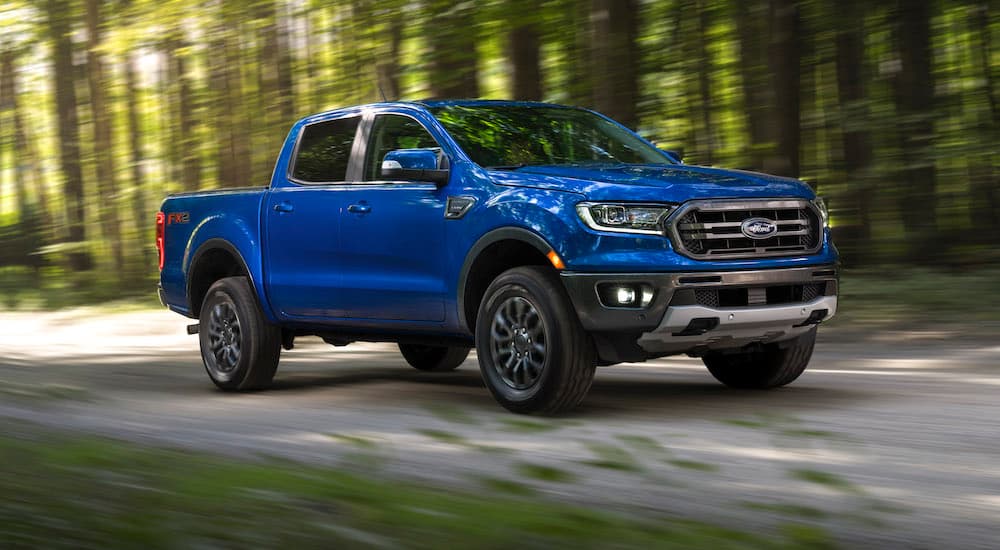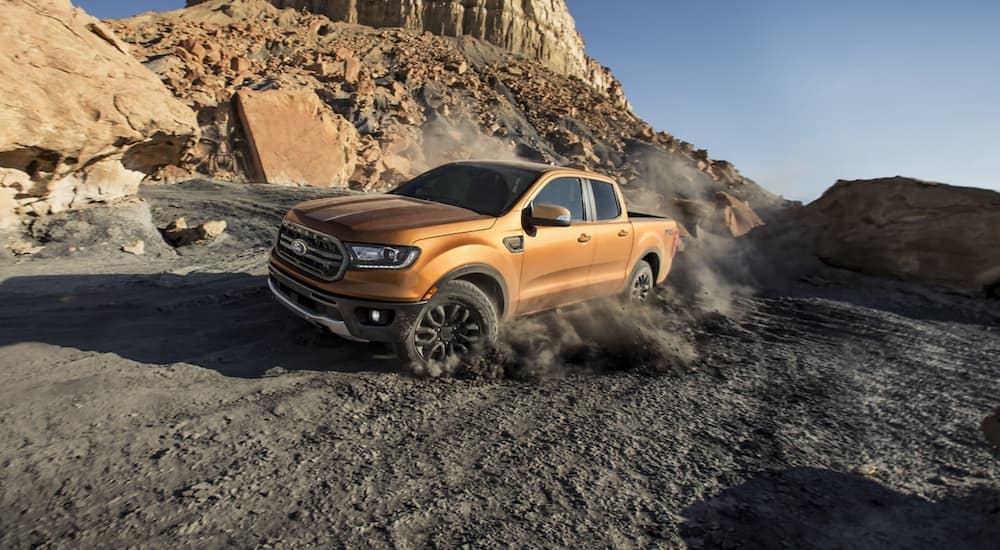
Ford reintroduced the Ranger as a midsize pickup truck for the 2019 model year, ending an eight-year drought for drivers who wanted a Ford pickup but didn't need the full-size F-150. The newly reborn Ranger was a hit; after a few production hiccups, sales exceeded 10,000 units per month by November of 2019. And little wonder, as the new Ranger's high-tech redesign set it apart from its older rivals. So, if you're searching for a Ford Ranger for sale today, you might enjoy reflecting on the long journey that led to the creation of your favorite truck.
Roots in an Oil Shock
American cars and trucks had grown famously huge by the early 1970s, fueled by cheap gasoline and general prosperity. American dependence on imported oil had grown along with our cars. But that all changed in 1973 when the Organization of Petroleum Exporting Countries (OPEC) colluded to slash oil production, raise its price, and ban the direct sale of oil to the US and several other countries in response to military support for Israel.
Almost overnight, gas prices soared, and lines formed all the way up the street at any gas station that managed to get in a shipment. In some places, you could only buy gas on certain days of the week, depending on whether your license plate ended in an odd or even number. Combined with a general economic slowdown at the time, the word "shock" is an appropriate description of people's reactions to the events of the day.
Japanese manufacturers had been patiently increasing their presence in the US market for a couple of decades as of the early 1970s, carefully growing their dealer networks and introducing American consumers to the idea of small, ultra-reliable cars. The oil shock gave them a huge boost since they already had the expertise to build lightweight, fuel-efficient vehicles, including pickup trucks. In particular, Toyota and Datsun (now called Nissan) sold popular compact pickups in the US.
The Ranger's Predecessor
Even before the oil shock, Ford recognized the shift in consumer demand and saw an opportunity. Instead of building from scratch, Ford collaborated with Mazda to tap into the existing proficiency of the Japanese compact automotive market. This led to the birth of the Ford Courier, a rebranded version of the Mazda B-Series pickup. Introduced in 1972, just a year before the oil crisis, the timing of the Courier's debut proved fortuitous. It also inspired GM to team up with Isuzu to produce the Chevy LUV and induced Chrysler to collaborate with Mitsubishi to create the Dodge D-50. A new compact domestic-badged truck market was born.
Spanning over three decades, from 1972 to 2007, the Ford-Mazda partnership resulted in four generations of the Courier. While the truck found consumers in North America, Australia, and New Zealand, only the first two generations graced the American market, with their presence lasting until 1982. This paved the way for the subsequent debut of the first-generation Ford Ranger in 1983.
The Genesis of the Ranger
Ford's ultimate goal was to produce its own small, domestically manufactured pickup. This proved to take some time, however, as Ford had to learn how to make small trucks from scratch. The result would prove to be worth it, however, ending in Ford producing one of the most popular small trucks of all time, a veritable legend both in the US and in other markets around the world.
Using lightweight materials and the latest technology, the new Ranger would combine fuel efficiency and capability in an attractive, rugged package. However, the Ranger's journey to market wasn't without challenges. A second oil shock in 1979 left motorists facing long gas queues yet again, dampening the market for pickups. Financial constraints at Ford also threatened the Ranger's launch. Despite the challenges, the Ranger persevered.
It officially launched for the 1983 model year and, over the next 28 years, would sell 7 million units. This initial run covered three generations of the Ranger. It remained popular, but by the early 2000s, pickup truck buyers' needs were changing. This shift in preference marked the end of an era for the Ranger, which was discontinued after the 2011 model year.

Ranging Overseas
Ford continued its truck collaboration with Mazda, selling a Ranger in overseas markets that was based on a Mazda pickup truck. This version of the Ranger never came to the US, but it gave Ford insight into the needs of foreign pickup buyers. In 2011, it introduced a new Ford-designed Ranger in foreign markets. Since this Ranger was geared toward the tastes of buyers in its intended markets, Ford never brought this model to the US either.
Ironically, while Ford was selling a rebadged Mazda as a Ranger in foreign markets, things came full circle when Mazda began selling a rebadged Ranger as a Mazda here in the US, where Mazda maintained a pickup truck presence after its first partnership to produce the Ford Courier ended. Initially, it sold its own design as the B-series in the US, but after 1994, changing regulations induced Mazda to renew its partnership with Ford in order to sell a rebadged Ranger as the B-series in the States. By this point, Ford's mastery of small pickup design had turned the tables on the imports. After the domestic Ranger was discontinued in 2011, the collaboration between the two companies came to an end in the US.
The Ranger Rebirth
Ford Ranger fans rejoiced when the Ranger returned for the 2019 model year. Now a mid size truck rather than a compact truck like its predecessor, the Ranger remains a true truck with a mostly steel body-on-frame design built around a brand-new, fully boxed frame. It shares some parts with the larger F-150 but has all its own body panels on its supercab body. An aluminum hood and tailgate help to keep weight down, in keeping with the Ranger's tradition of using lightweight materials. However, it wears real steel bumpers, setting it apart from many of its competitors.
When it was reintroduced, there was one engine offered: an aluminum 2.3-liter EcoBoost inline four-cylinder with a double-roller timing chain and forged crankshaft and connecting rods. These features gave the engine the toughness that it needed for truck duty. The engine lineup has grown to include two larger V6 models. A 2.7-liter EcoBoost engine produces 315 hp and 400 lb-ft of torque. Above that in the lineup is a 3.0-liter EcoBoost, which is the most powerful engine found in a Ranger. It cranks out a class-leading 405 hp and 430 lb-ft of torque. It features a Baja mode for truly fearless off-roading. Appropriately, this engine is standard in the Ranger Raptor, the off-road version of this celebrated pickup.

The Future
Where does the Ranger go from here? There's a planned plug-in hybrid model, but it will be only for overseas markets. The rumor mills say there will be a Ranger Lightning electric model in 2025, pairing with the well-received F-150 Lightning. Both high-tech models testify to Ford's adaptability and commitment to understanding diverse truck markets. Its journey from being a rebadged Mazda to being the standout model it is today highlights the Ranger's pivotal role in shaping the compact and midsize truck landscape, both in the US and abroad.

